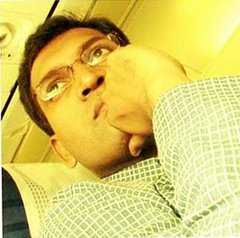
Grit, determination and sheer focus helped 26-year-old Shundell Prasad to trace her family tree back to the 1800s. The process took her a tedious three years.
New York-based Indo-Guyanese film maker, Shundell Prasad, was at her final year in New York University’s Tisch School of the Arts when she decided to make a film on something she was always curious about— her identity.
She traveled three continents in search of her roots. “It is a great feeling to know about one’s roots,” she revealed.
Her journey to trace her roots in now in the form of a documentary film – Once more removed- a journey back to India.
When asked why she wanted to find her roots – prompt came the reply from her – “I started researching this film while I was still in university, simply because I wanted to know why I looked Indian, but did not have any connections or ties with India.
"I am a descendent of the people who were transported from India 150 years ago to inhabit what was then known as British Guyana, as indentured servants for the British Empire," she said.
Prasad's journey in the film begins from Queens, NY and then to the sweltering sugar cane fields of Guyana.
"I have managed to exhume my forefather's 19th Century ship records from the massive vaults of Guyana's record room. These records were a huge discovery, as they became my navigational map back to India."
She further says: "My expedition into mapping the pattern of migration backwards to India's remote villages is very exciting. Based on the information extracted from the ship records, we pursue India's northeastern belt. We travel to the two main areas in India that were part of Indian Sepoy Mutiny of 1857: Bihar and East Uttar Pradesh."
"In Bihar, I found my roots in Muzaffarpur. In Uttar Pradesh, I found relatives of my father in Azamgarh. It is here, in India, that I am graciously welcomed back to my ancestral homeland. It is stranger than fiction to come face to face with my relatives who live in dire poverty. It is here that I realize the spirit and dignity of these people," said Prasad.
Prasad was six when her parents immigrated from Guyana to the US, making her a second-generation Guyanese. However, given that her forefathers were migrant settlers in Guyana from India, makes Prasad an Indo- Guyanese. “Knowing I was a Guyanese of Indian origin created a lot of conflict about my identity,” says Prasad. “ I was also fascinated about India and where I came from in India.” She adds that neither her parents nor her grandparents had the answers to the questions she posed about her true identity.
"It was stranger than fiction to come face to face with my relatives who live in dire poverty. It was here that I realised how removed I had become", she says. The documentary has a 90-minute product for the world to see
August 1, 2009
Once More Removed
Subscribe to:
Post Comments (Atom)



1 comment:
Nice story, I would love to see her documentary if you could post the video link some time.
Post a Comment